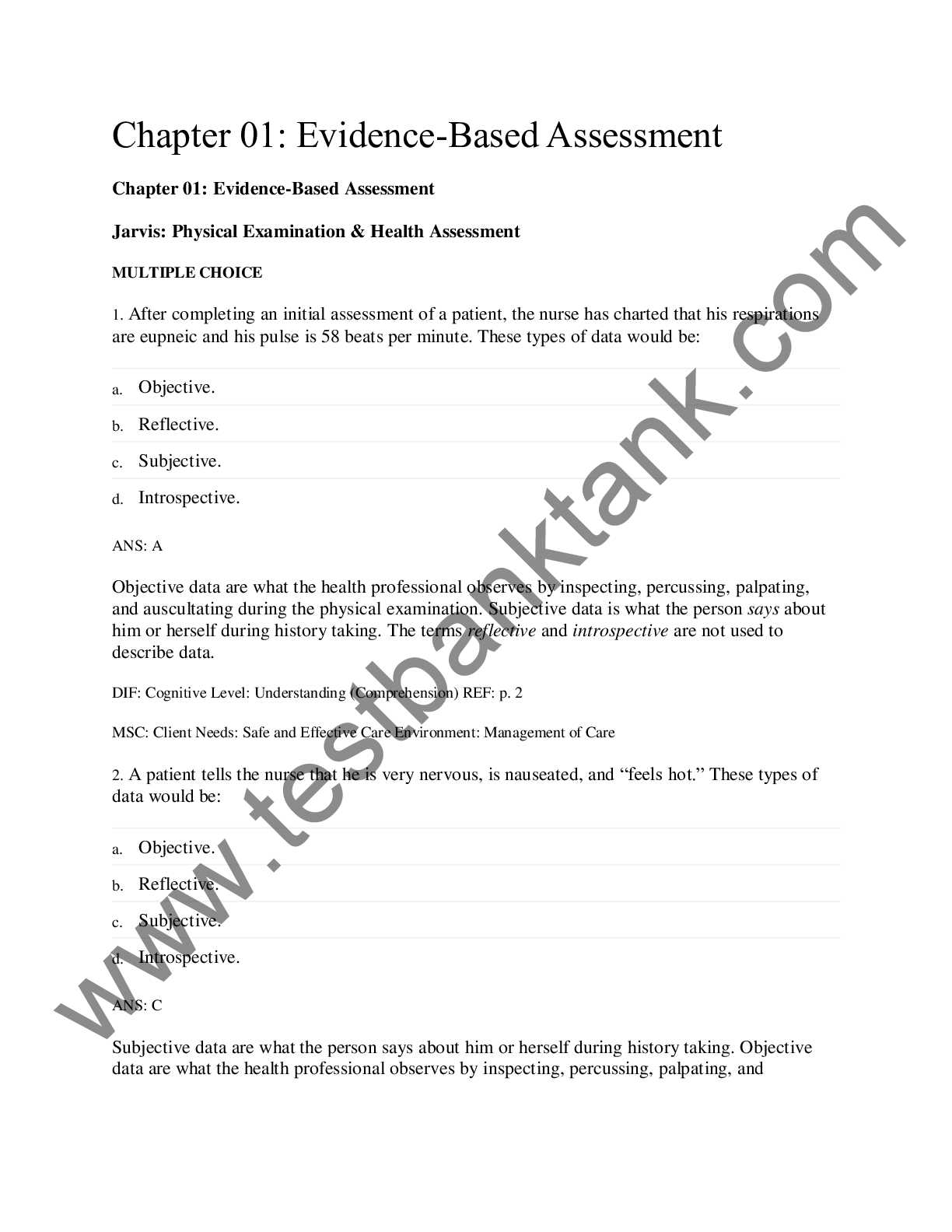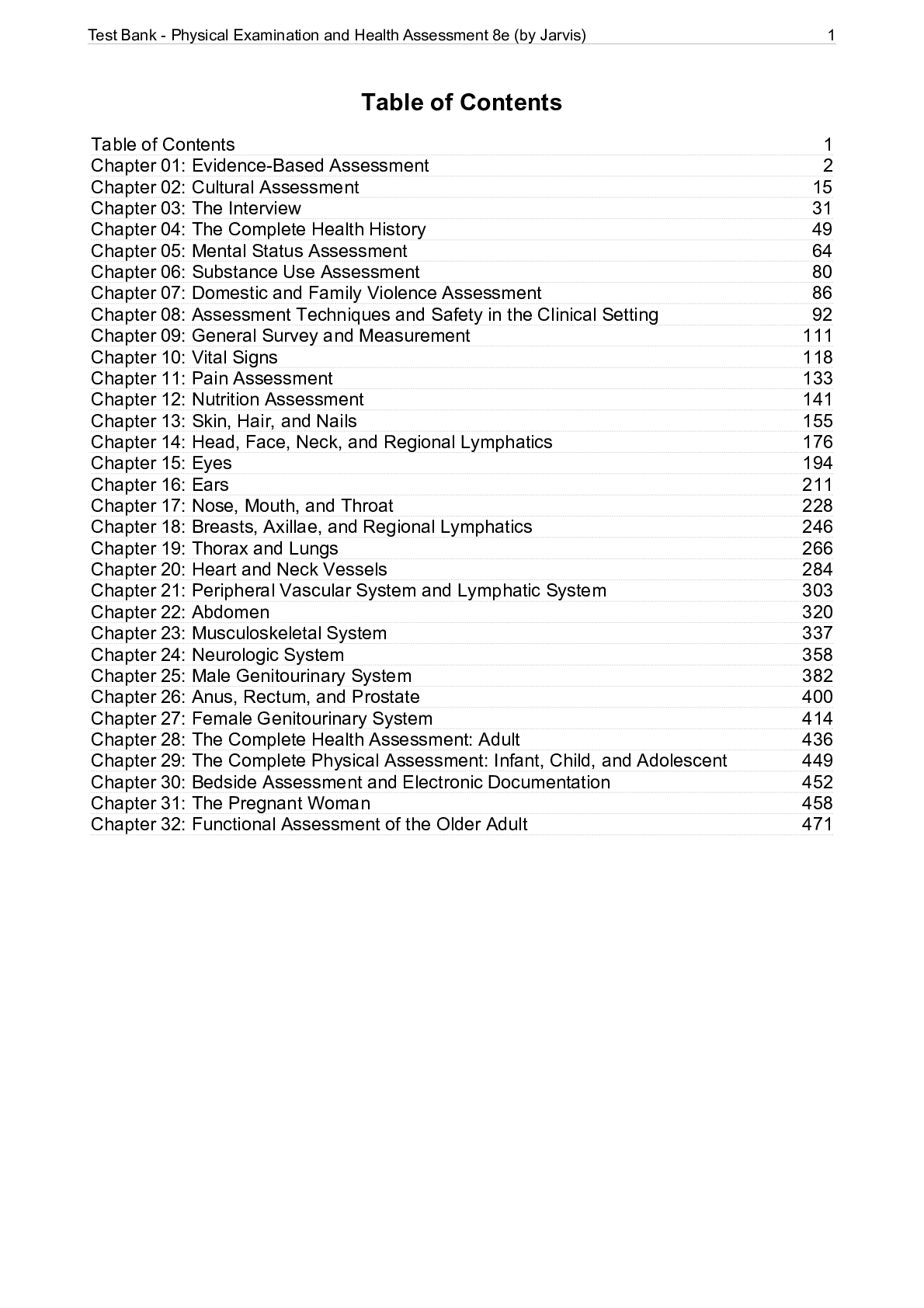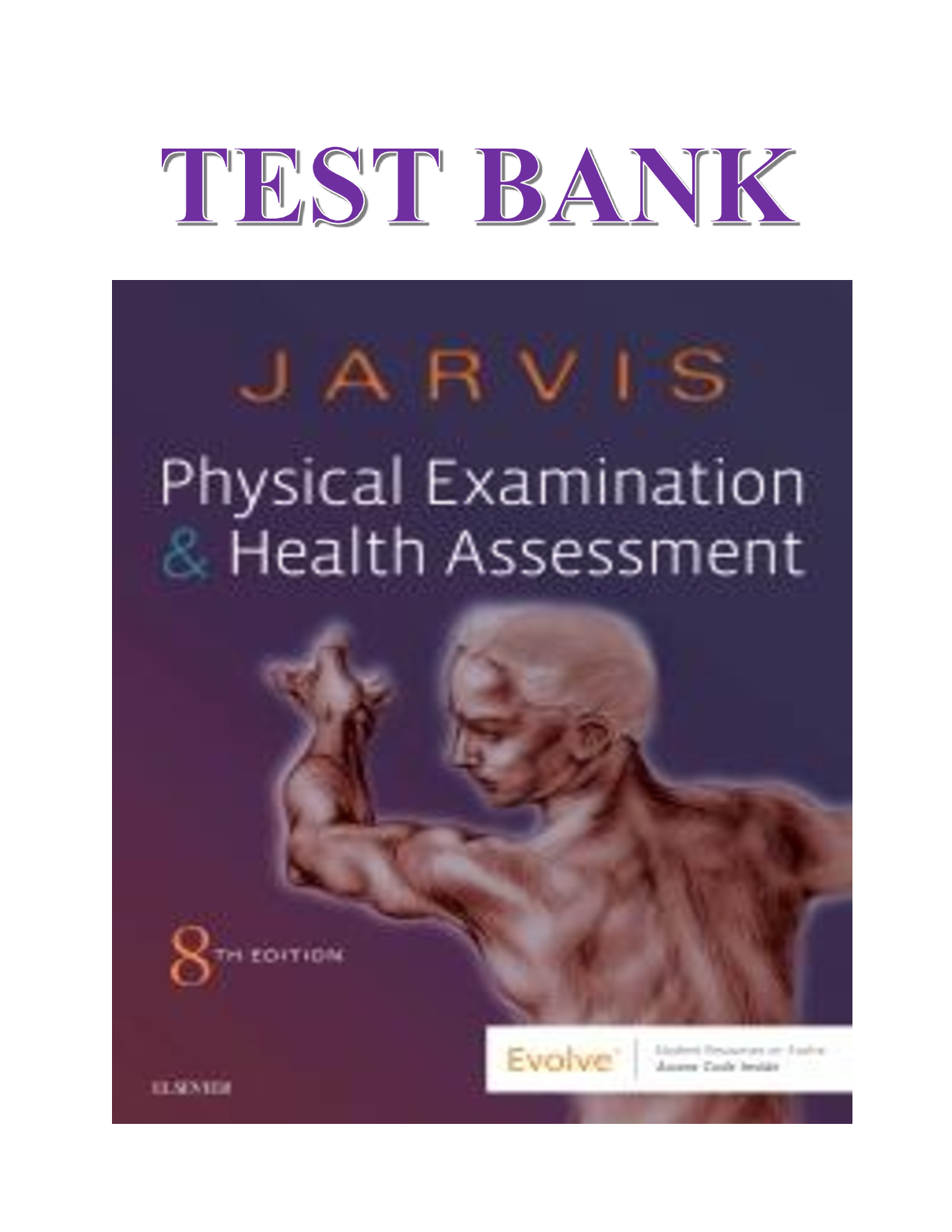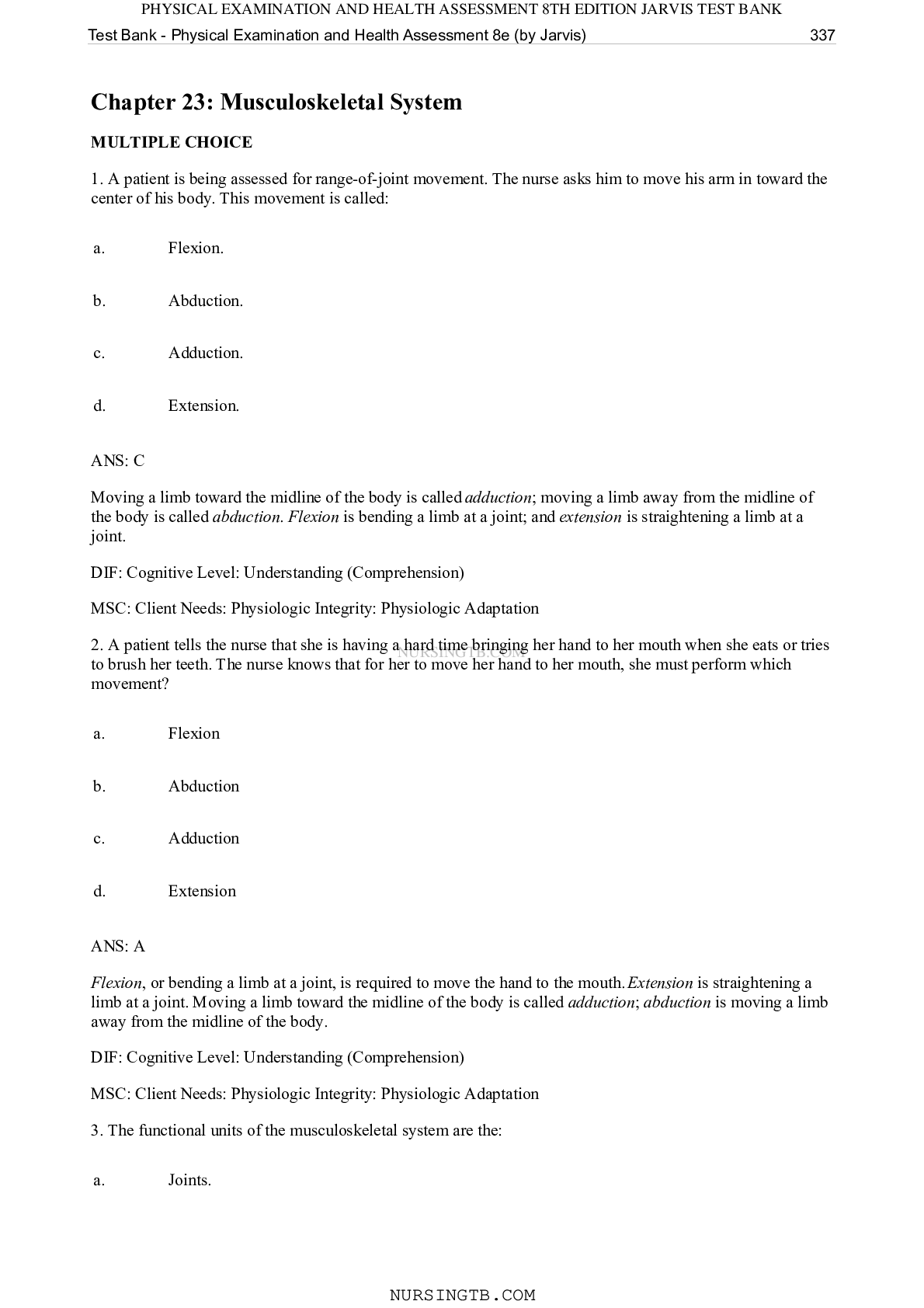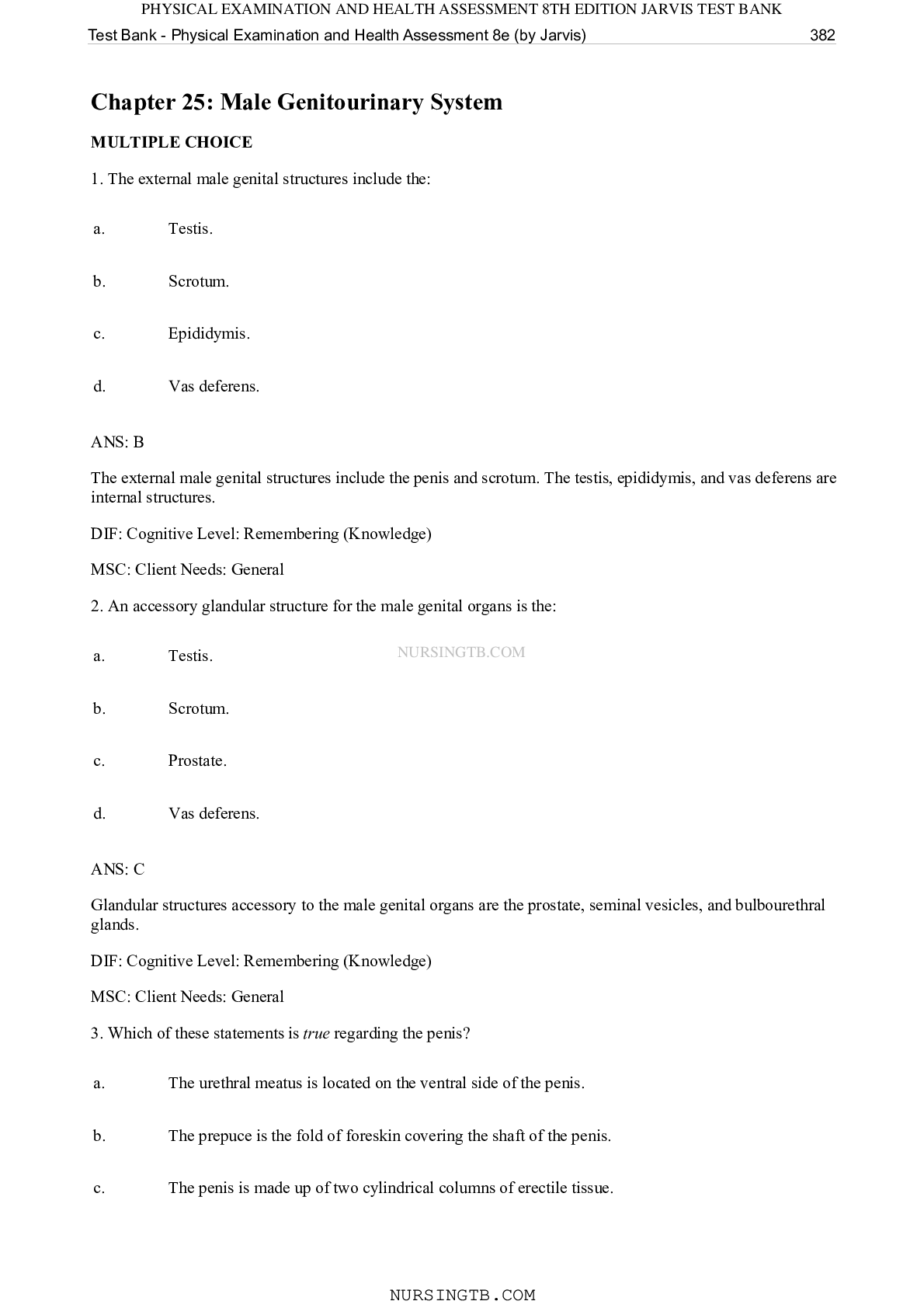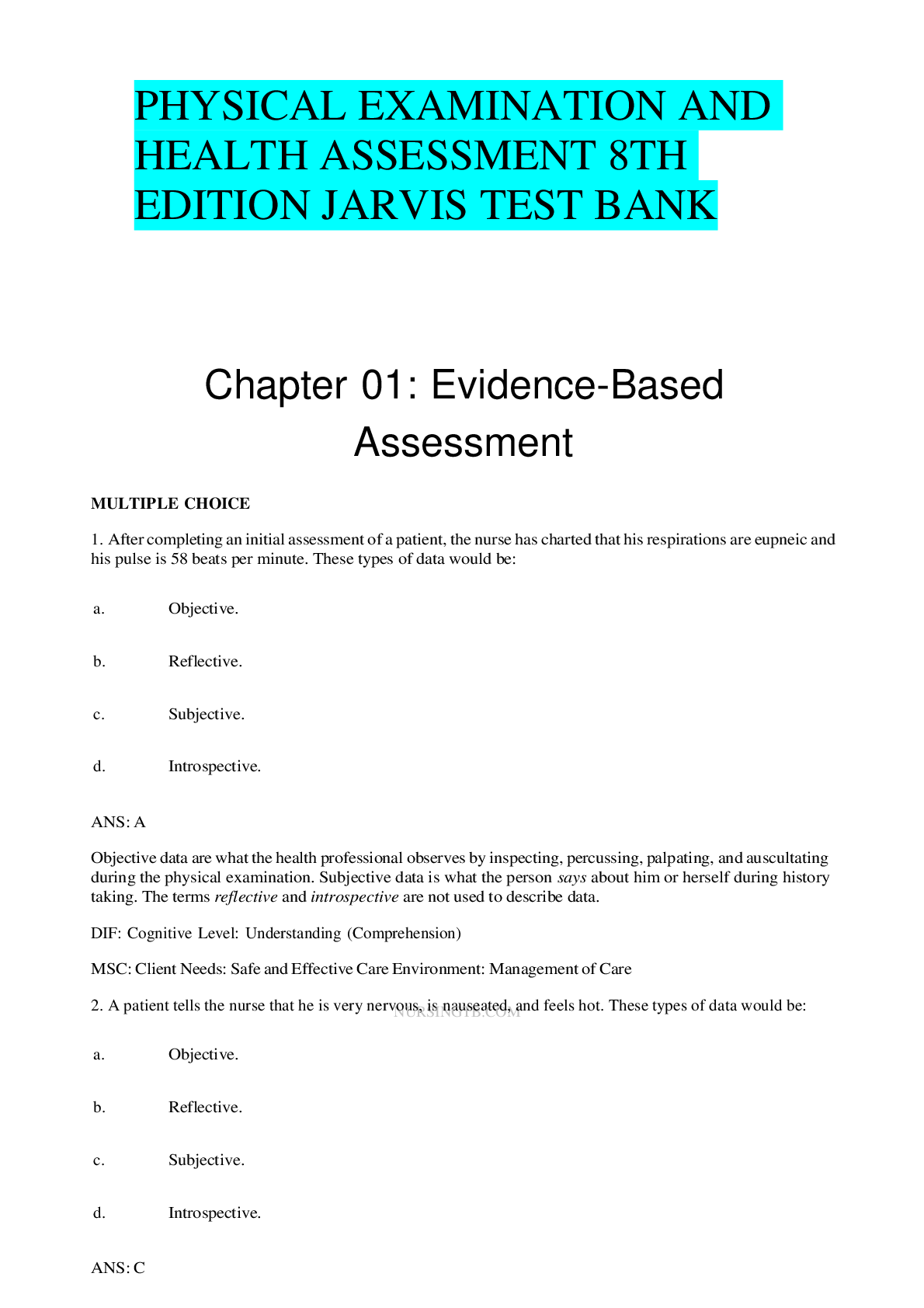*NURSING > QUESTIONS & ANSWERS > Physical Examination and Health Assessment 8th Edition NEWEST 2022 100% VERIFIED (All)
Physical Examination and Health Assessment 8th Edition NEWEST 2022 100% VERIFIED
Document Content and Description Below
Physical Examination and Health Assessment 8th Edition Chapter 1 - Evidence-Based Assessment 3 Chapter 2 - Cultural Assessment 13 Chapter 3 - The Interview 26 Chapter 4 - The Complete Health Hist... ory 43 Chapter 5 - Mental Status Assessment 55 Chapter 6 - Substance Use Assessment 70 Chapter 7 - Domestic and Family Violence Assessment 76 Chapter 8 - Assessment Techniques and Safety in the Clinical Setting 82 Chapter 9 - General Survey and Measurement 97 Chapter 10 - Vital Signs 102 Chapter 11 - Pain Assessment 116 Chapter 12 - Nutrition Assessment 123 Chapter 13 - Skin Hair and Nails 134 Chapter 14 - Head Face Neck and Regional Lymphatics 152 Chapter 15 - Eyes 166 Chapter 16 - Ears 180 Chapter 17 - Nose Mouth and Throat 195 Chapter 18 - Breasts Axillae and Regional Lymphatics 210 Chapter 19 - Thorax and Lungs 226 Chapter 20 - Heart and Neck Vessels 241 Chapter 21 - Peripheral Vascular System and Lymphatic System 255 Chapter 22 - Abdomen 269 Chapter 23 - Musculoskeletal System 282 Chapter 24 - Neurologic System 299 Chapter 25 - Male Genitourinary System 320 Chapter 26 - Anus Rectum and Prostate 334 Chapter 27 - Female Genitourinary System 344 Chapter 28 - The Complete Health Assessment Adult 362 Chapter 29 - The Complete Physical Assessment Infant Young Child and Adolescent 367 Physical Examination and Health Assessment 8th Edition Chapter 30 - Bedside Assessment and Electronic Documentation 369 Chapter 31 - The Pregnant Woman 374 Chapter 32 - Functional Assessment of the Older Adult 385 Physical Examination and Health Assessment 8th Edition Chapter 1 - Evidence-Based Assessment 3 Chapter 01: Evidence-Based Assessment Jarvis: Physical Examination and Health Assessment, 8th Edition MULTIPLE CHOICE 1. After completing an initial assessment of a patient, the nurse has charted that his respirations are eupneic and his pulse is 58 beats per minute. What type of assessment data is this? a. Objective b. Reflective c. Subjective d. Introspective ANS: A Objective data is what the health professional observes by inspecting, percussing, palpating, and auscultating during the physical examination. Subjective data is what the person says about him or herself during history taking. The terms reflective and introspective are not used to describe data. DIF: Cognitive Level: Understanding (Comprehension) MSC: Client Needs: Safe and Effective Care Environment: Management of Care 2. A patient tells the nurse that he is very nervous, nauseous, and “feels hot.” What type of assessment data is this? a. Objective b. Reflective c. Subjective d. Introspective ANS: C Subjective data is what the person says about him or herself during history taking. Objective data is what the health professional observes by inspecting, percussing, palpating, and auscultating during the physical examination. The terms reflective and introspective are not used to describe data. DIF: Cognitive Level: Understanding (Comprehension) MSC: Client Needs: Safe and Effective Care Environment: Management of Care 3. What do the patient’s record, laboratory studies, objective data, and subjective data combine to form? a. Database b. Admitting data c. Financial statement d. Discharge summary ANS: A Together with the patient’s record and laboratory studies, the objective and subjective data form the database. The other items are not part of the patient’s record, laboratory studies, or data. DIF: Cognitive Level: Remembering (Knowledge) MSC: Client Needs: Safe and Effective Care Environment: Management of Care Physical Examination and Health Assessment 8th Edition Chapter 1 - Evidence-Based Assessment 4 4. When listening to a patient’s breath sounds, the nurse is unsure of a sound that is heard. Which action should the nurse take next? a. Notify the patient’s physician. b. Document the sound exactly as it was heard. c. Validate the data by asking another nurse to listen to the breath sounds. d. Assess again in 20 minutes to note whether the sound is still present. ANS: C When unsure of a sound heard while listening to a patient’s breath sounds, the nurse validates the data to ensure accuracy by either repeating the assessment themselves or asking another nurse to assess the breath sounds. If the nurse has less experience analyzing breath sounds, then he or she should ask an expert to listen. When unsure of a sound heard while listening to a patient’s breath sounds, the nurse should validate the data before documenting to ensure accuracy and before notifying the patient’s physician. To validate that data, the nurse either repeats the assessment himself or herself or asks another nurse to assess the breath sounds. DIF: Cognitive Level: Analyzing (Analysis) MSC: Client Needs: Safe and Effective Care Environment: Management of Care 5. The nurse is conducting a class for new graduate nurses. While teaching the class, what should the nurse keep in mind regarding what novice nurses, without a background of skills and experience from which to draw upon, are more likely to base their decisions on? a. Intuition b. A set of rules c. Articles in journals d. Advice from supervisors ANS: B Novice nurses operate from a set of defined, structured rules to make decisions. It takes time, perhaps a few years, in similar clinical situations to achieve competency and it is functioning at the level of an expert practitioner when intuition is included in making clinical decisions. Intuition is included in decision making when functioning at the level of an expert practitioner. While information in journal articles and advice from supervisors may assist in making decisions, novice nurses do not typically base their decisions on them. It would also be important that if information from journal articles and advice from supervisors were used, that they were evidence based. DIF: Cognitive Level: Understanding (Comprehension) MSC: Client Needs: General 6. The nurse is reviewing information about evidence-based practice (EBP). Which statement best reflects EBP? a. EBP relies on tradition for support of best practices. b. EBP is simply the use of best practice techniques for the treatment of patients. c. EBP emphasizes the use of best evidence with the clinician’s experience. d. EBP does not consider the patient’s own preferences as important. ANS: C Physical Examination and Health Assessment 8th Edition Chapter 1 - Evidence-Based Assessment 5 EBP is a systematic approach to practice that emphasizes the use of research evidence in combination with the clinician’s expertise and clinical knowledge (physical assessment), as well as patient values and preferences, when making decisions about care and treatment. EBP is more than simply using the best practice techniques to treat patients, and questioning tradition is important when no compelling and supportive research evidence exists. DIF: Cognitive Level: Applying (Application) MSC: Client Needs: Safe and Effective Care Environment: Management of Care 7. The nurse is conducting a class on priority setting for a group of new graduate nurses. Which is an example of a first-level priority problem? a. Patient with postoperative pain b. Newly diagnosed patient with diabetes who needs diabetic teaching c. Individual with a small laceration on the sole of the foot d. Individual with shortness of breath and respiratory distress ANS: D First-level priority problems are those that are emergent, life-threatening, and immediate (e.g., establishing an airway, supporting breathing, maintaining circulation, monitoring abnormal vital signs). Postoperative pain, diabetic teaching for a patient newly diagnosed with diabetes, and a small laceration on sole of the foot are not considered first-level priority problems. DIF: Cognitive Level: Understanding (Comprehension) MSC: Client Needs: Safe and Effective Care Environment: Management of Care 8. When considering priority setting of problems, the nurse keeps in mind that second-level priority problems include which of these aspects? a. Low self-esteem b. Lack of knowledge c. Abnormal laboratory values d. Severely abnormal vital signs ANS: C Abnormal laboratory values are a second-level priority problem. Second-level priority problems are those that require prompt intervention to forestall further deterioration (e.g., mental status change, acute pain, abnormal laboratory values, risks to safety or security). Low self-esteem and lack of knowledge are considered third-level priority as although they are important to a patient’s health, they can be addressed after more urgent health problems are addressed. Severely abnormal vital signs would be considered a first-level priority problem. DIF: Cognitive Level: Understanding (Comprehension) MSC: Client Needs: Safe and Effective Care Environment: Management of Care 9. Which critical-thinking skill helps the nurse see relationships among the data? a. Validation b. Clustering related cues c. Identifying gaps in data d. Distinguishing relevant from irrelevant ANS: B [Show More]
Last updated: 1 year ago
Preview 1 out of 390 pages
Instant download
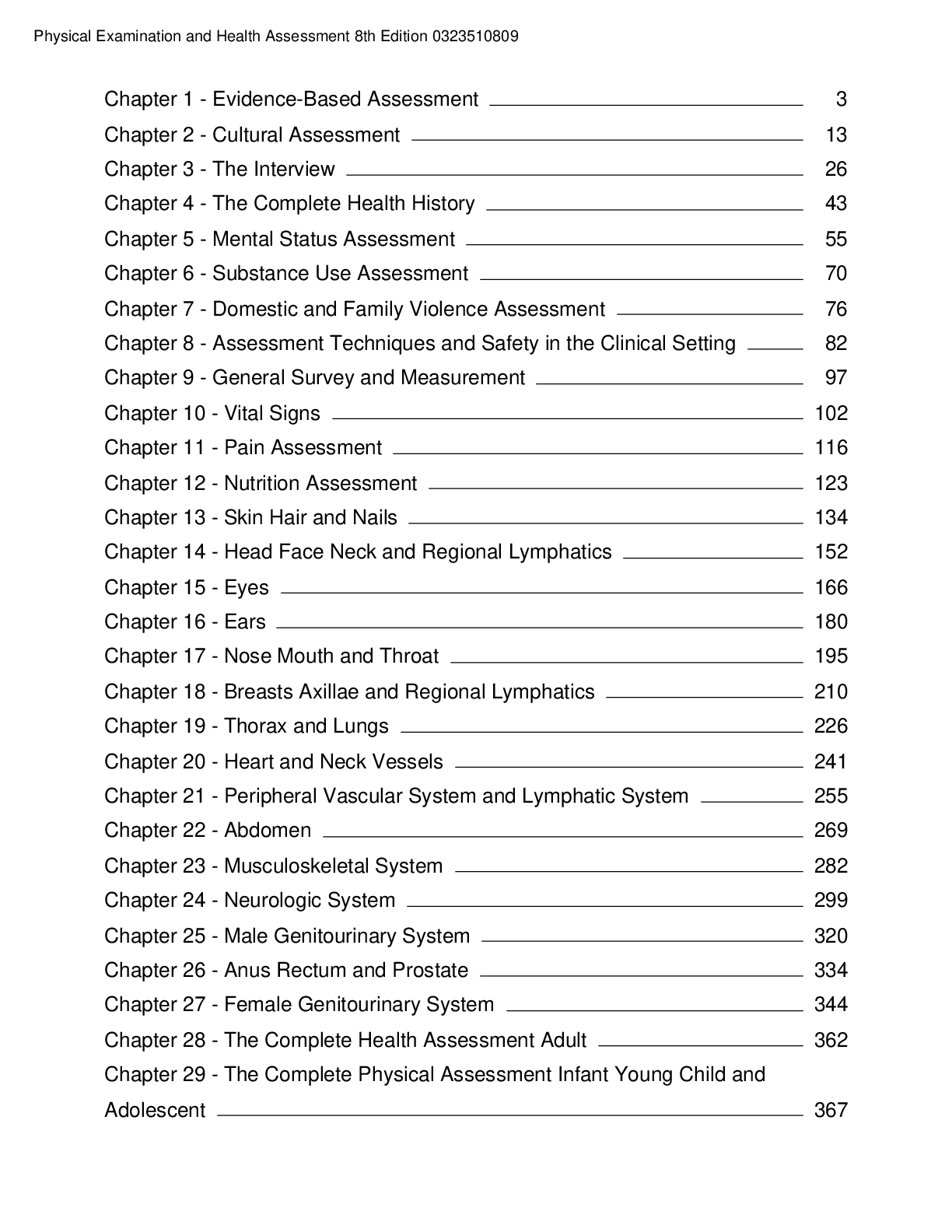
Buy this document to get the full access instantly
Instant Download Access after purchase
Add to cartInstant download
Reviews( 0 )
Document information
Connected school, study & course
About the document
Uploaded On
Nov 12, 2022
Number of pages
390
Written in
Additional information
This document has been written for:
Uploaded
Nov 12, 2022
Downloads
0
Views
32



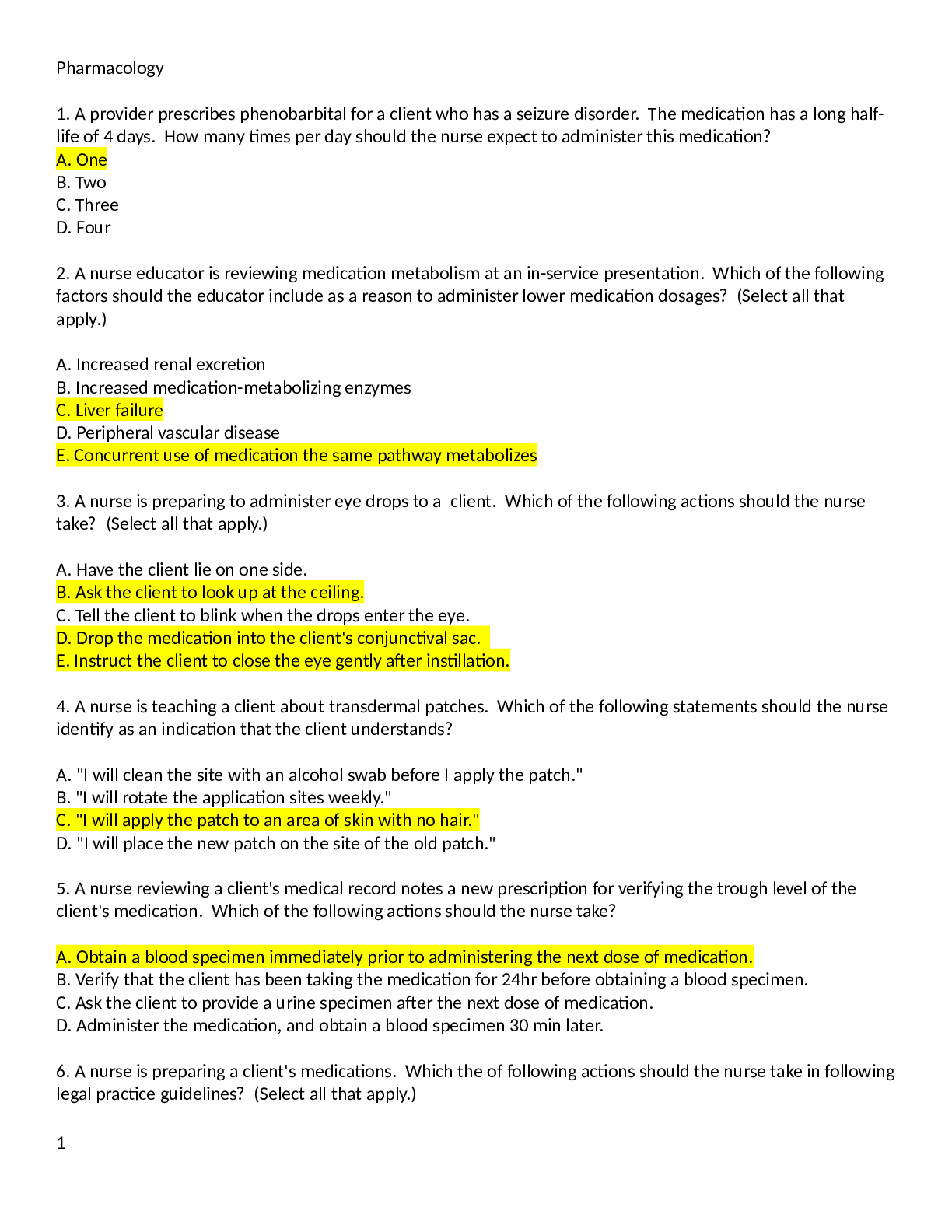

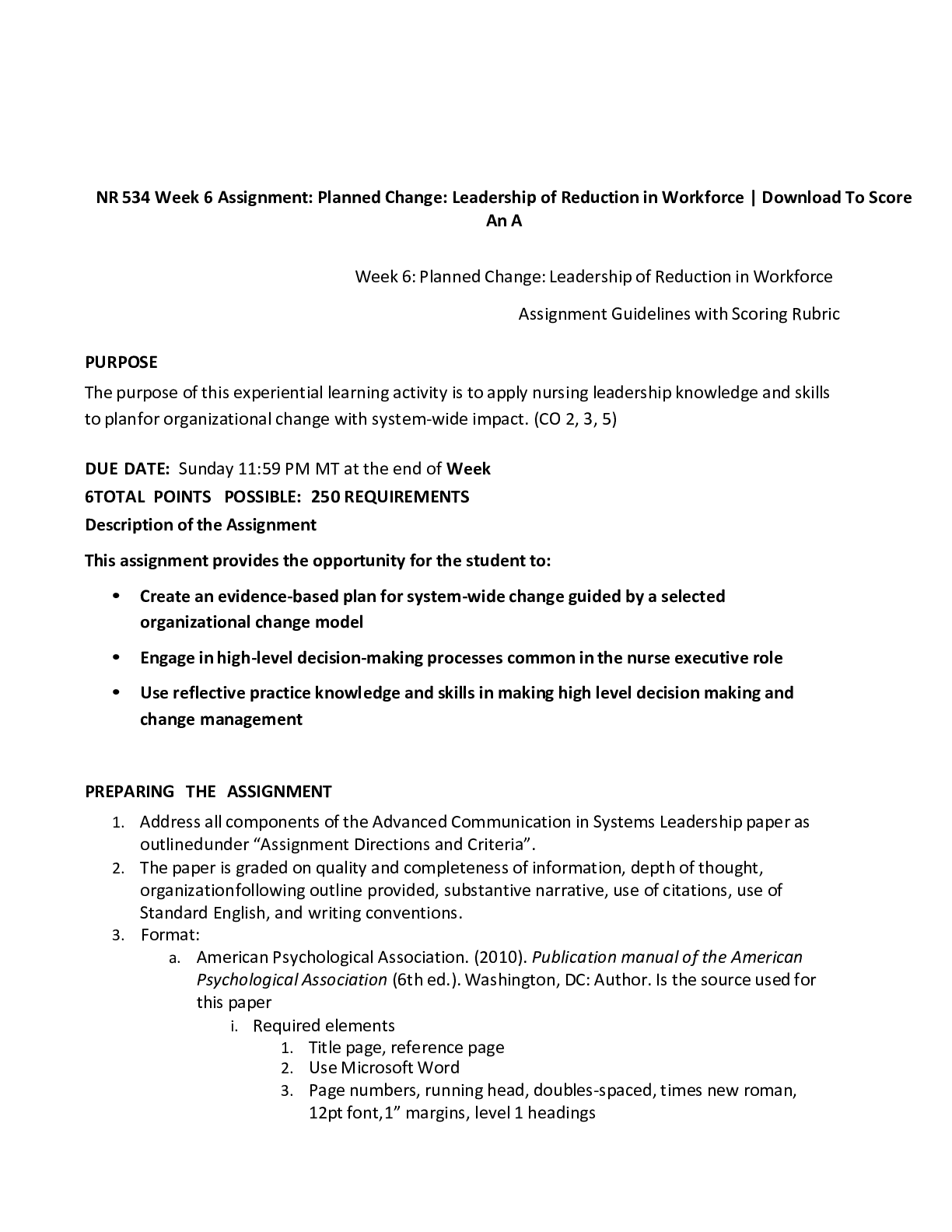
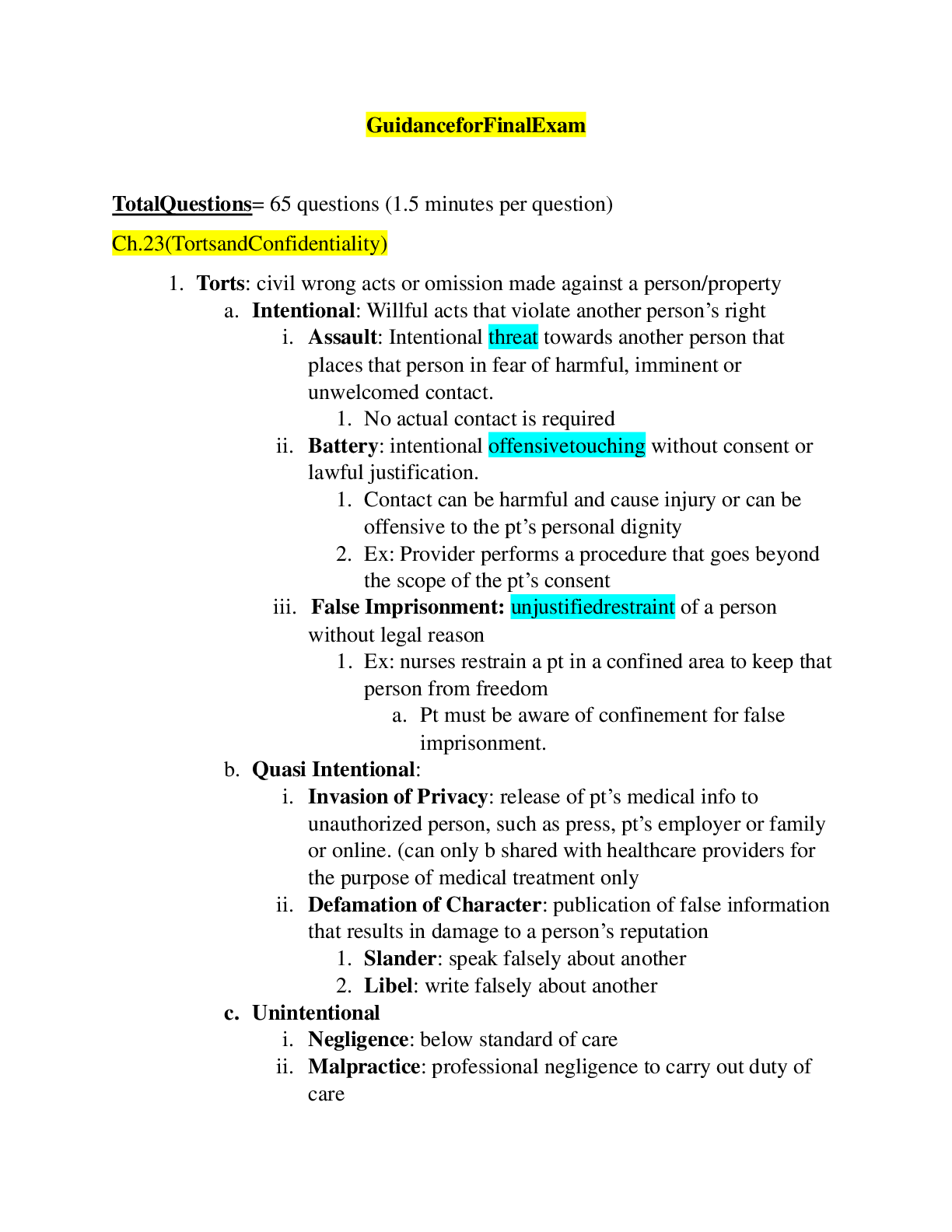

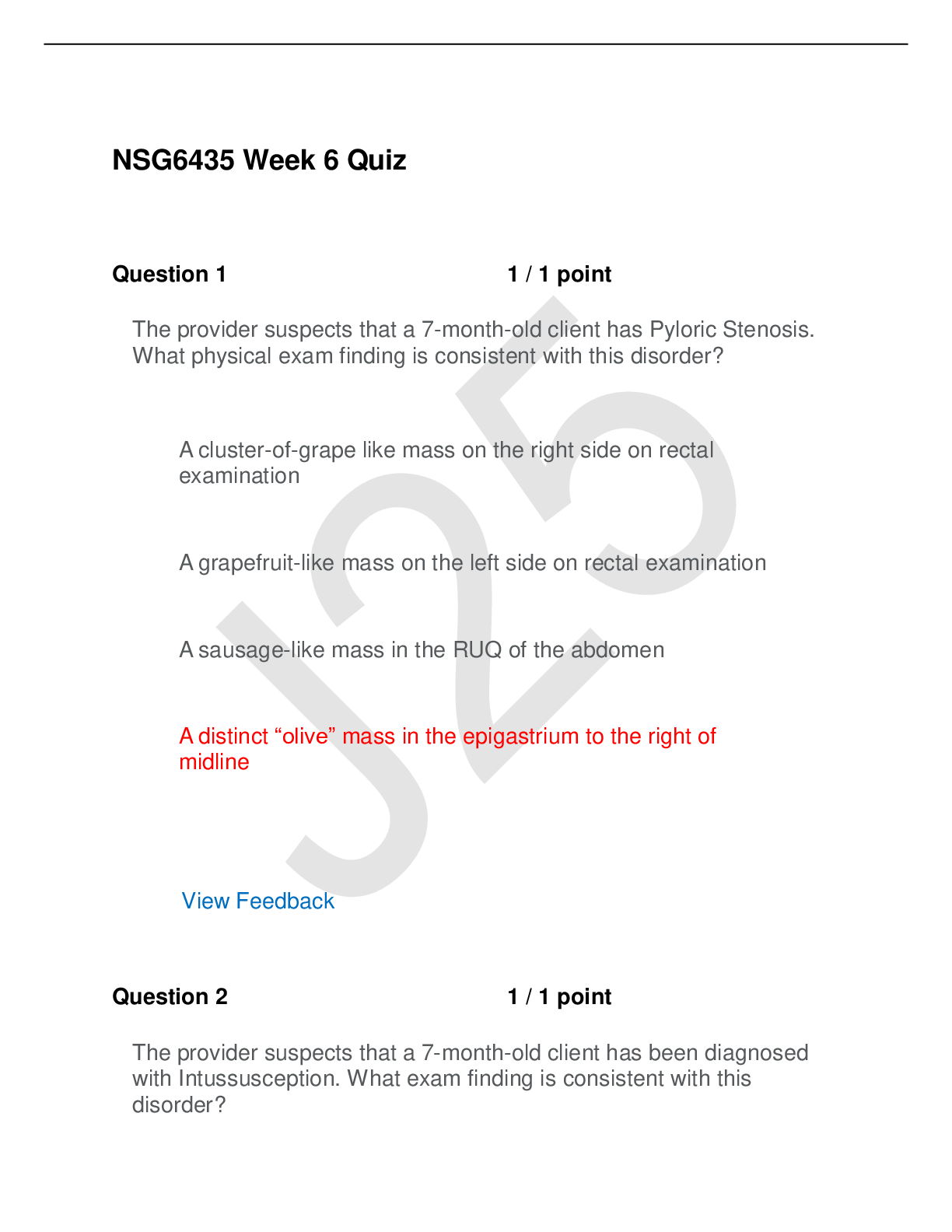



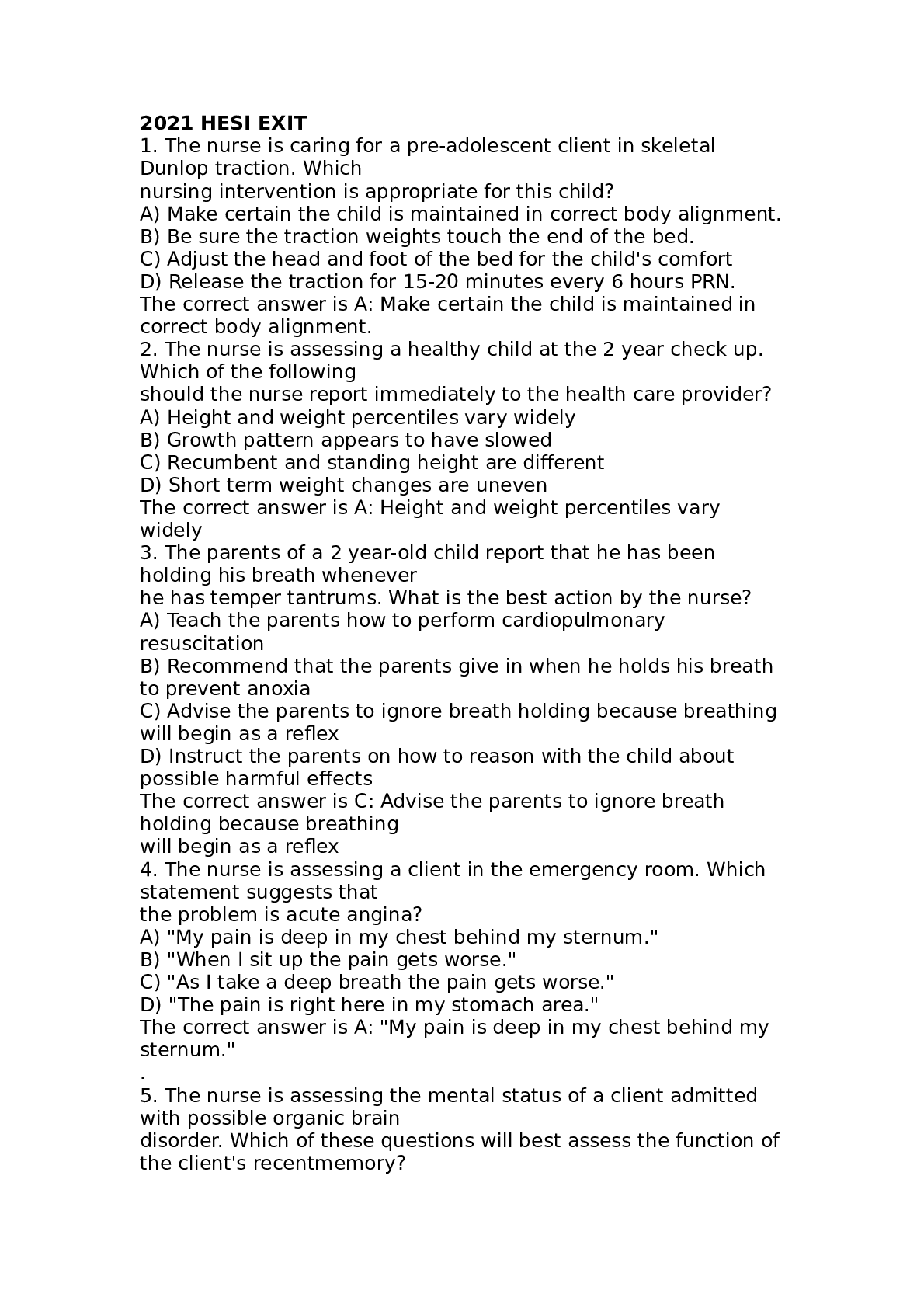

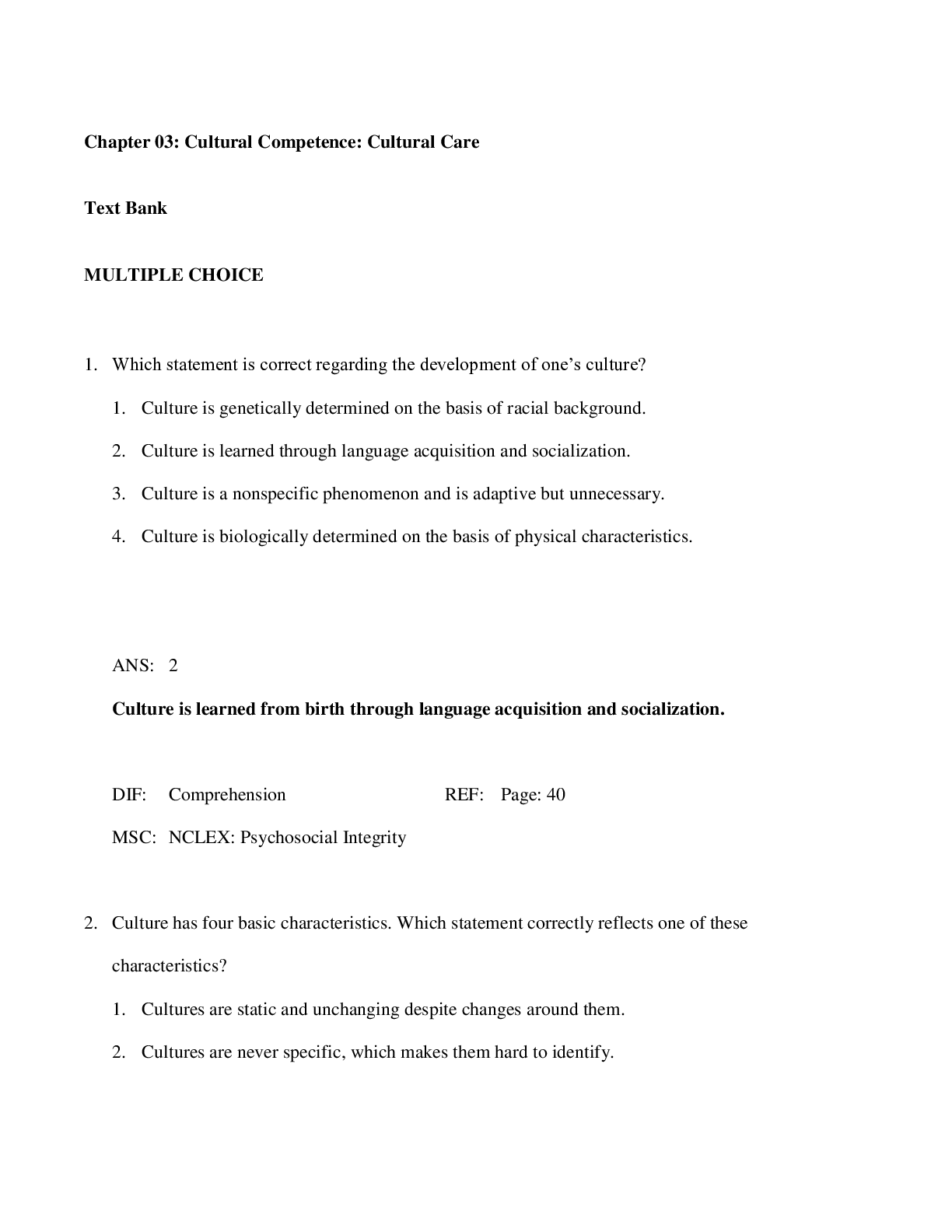
 Correct Study Guide, Download to Score A.png)
